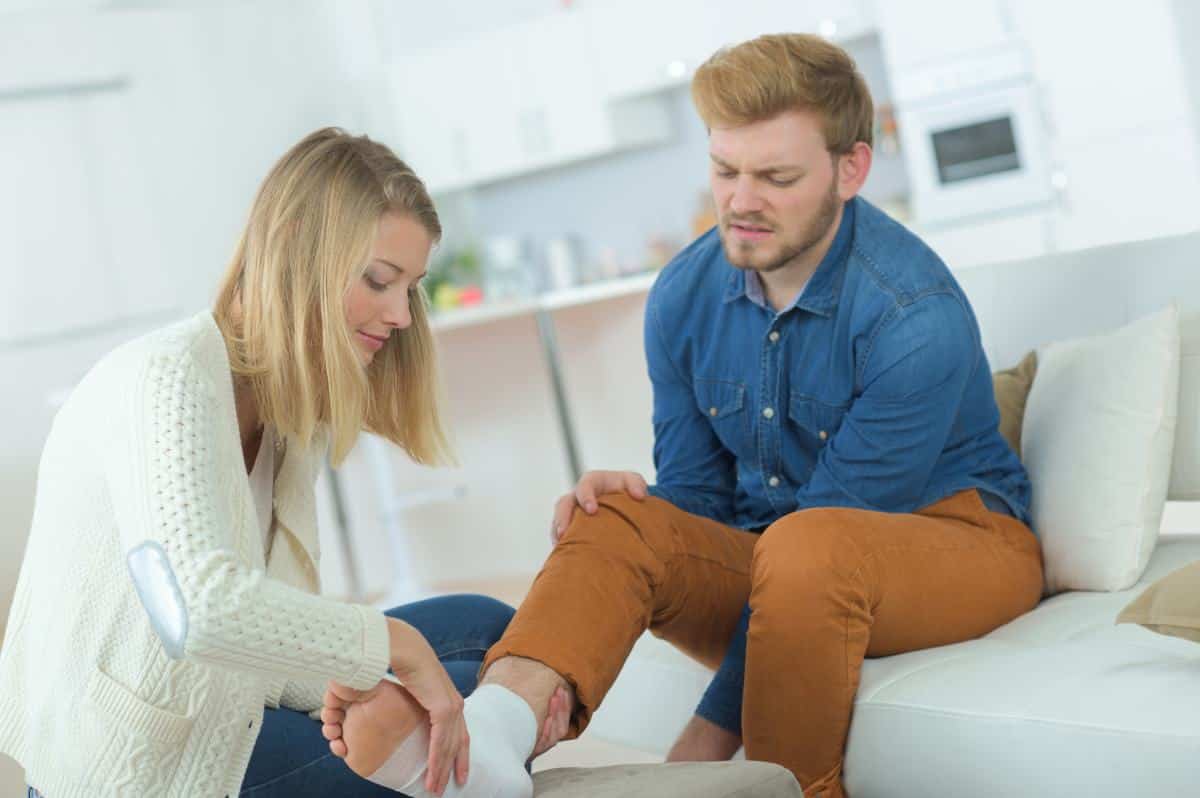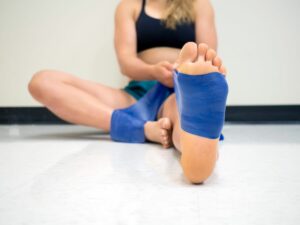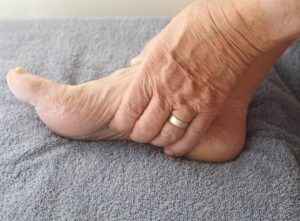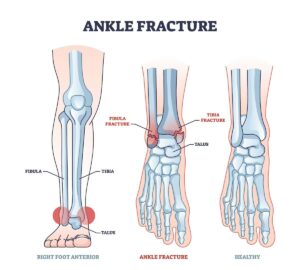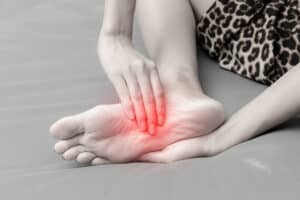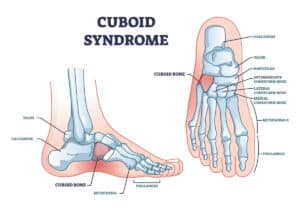Free download: Top 10 Natural & Easy Remedies for Joint Pain from Home. Learn these helpful remedies.
Estimated Reading Time: 9 minutes read
Have you ever smacked your toe into something hard?… It hurts! Never underestimate the pain that comes with a toe injury, including a sprained toe.
Toe sprains can be tough to heal from because it’s hard to rest the toes. We do have to walk, right??
For such a small area, you wouldn’t think a toe sprain would be a big deal. On the contrary, it very much is.
For this reason, we’re going to dive deeper into the nitty gritty of what a sprained toe is and the best ways to treat it.
Table of Contents
What is a Sprained Toe?
A sprained toe occurs when one or more ligaments around a toe become overstretched and tear to a certain degree.
Ligaments connect bone to bone. They help to support our joints and make sure they remain stable as we move.
If a ligament becomes forcefully overstretched, the ligament fibers will usually tear. How much and how severe the tearing is, depends on how bad the injury is.
Another term used to describe a sprained toe is a jammed toe. These can usually be used interchangeably.
Turf Toe
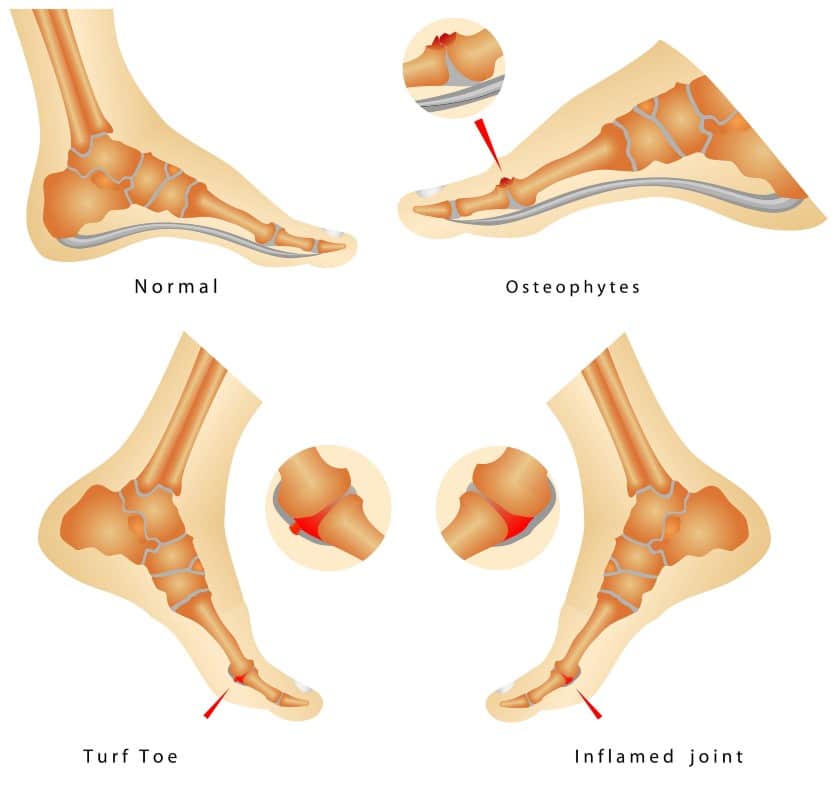
Let’s take a second to talk specifically about turf toe.
Turf toe is the most common toe sprain you’ll hear about.
This is specifically a big toe sprain that occurs at the first metatarsophalangeal joint. It’s incredibly common in athletes, usually from a hyperextension injury of the big toe.
Picture how the toes are positioned as you push off to run. When too much force is applied to the big toe in this position, it can cause a sprain.
Something to keep in mind though is that not all toe sprains are turf toe. This is a specific name given to a sprain of the big toe’s first metatarsophalangeal joint.
Causes of a Sprained Toe
So how in the world can you get a sprained toe?
While we talked about forced hyperextension being the most common cause of turf toe, realistically any of the toes can experience a sprain if forced too far in any direction. This includes hyper flexion, extension, adduction (varus force) or abduction (valgus force).
As mentioned with turf toe, athletes are common victims of toe sprains. This is especially true if their sport involves quick and sudden running, jumping and pivoting.
You also can sprain your toe from getting stepped on or something falling on your toe. That’s the worst! Especially if it involves heavy objects landing on your toe.
Have you ever forcefully stubbed or jammed your toe into something? This could also cause a toe sprain!
How Do You Know if You Sprained Your Toe?
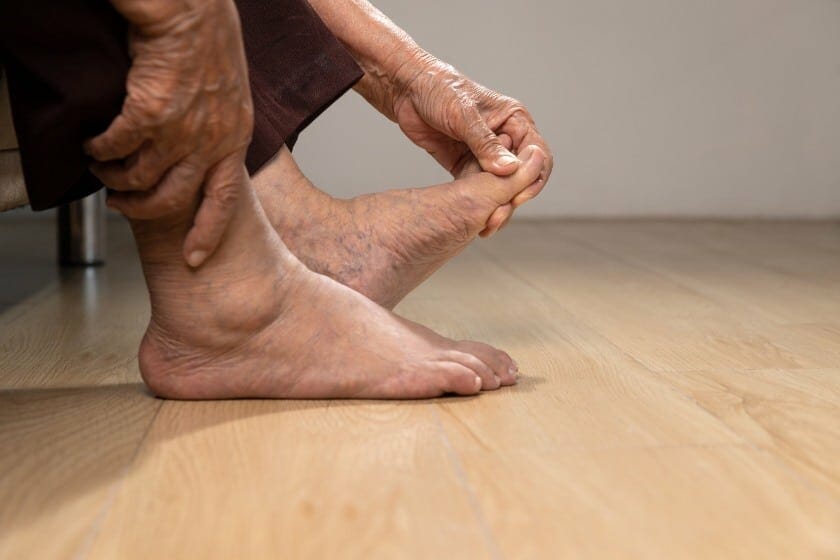
Sprained toe symptoms may vary depending on how bad the sprain is, but generally speaking, you’ll notice the following toe symptoms:
- Immediate severe pain
- Toe tenderness
- Swelling
- Bruising
- Decreased toe range of motion
- Pain with walking
- Pain improves with resting
Grades of a Sprained Toe
There are 3 possible grades of a sprained toe. Each of these grades will have different severity of symptoms and different recovery times for healing.
Grade 1: This is a mild sprain. No major damage has occurred to the ligaments. They’ve been overstretched, with possible micro tears, but nothing significant.
There will usually be no noticeable joint instability with a mild sprain. Mild pain and swelling may occur. Recovery time may range from a couple of weeks up to one month.
Grade 2: This is a moderate sprain or partial tear. There is usually more toe pain, tenderness and swelling with this compared to mild toe sprain symptoms.
You may find it possible, but more difficult, to walk with a moderate sprain. Mild instability of the toe joint may be present. Recovery time may range from 6-8 weeks on average.
Grade 3: This is a severe sprain or a completely torn ligament. You’ll usually experience a much more intense, throbbing pain in the affected toe. There will be significant swelling, bruising, possible internal bleeding, and tenderness.
Limited range will be available in the toe. Instability will very likely be present. It will be extremely difficult to walk on the injured toe. Recovery for this grade could take up to 3 months or even longer.
Treatment of a Sprained Toe
When should you see a doctor about a sprained toe?
If you’ve had a minor injury with mild toe pain, then you could try some at-home treatment to take care of it. If this pain persists for more than a week though, go see a doctor.
If you’ve had a more serious injury with immediate and severe pain, then seek medical attention right away. You’ll need to have the injured toe examined and possibly have imaging taken to assess it further.
If an ongoing or serious injury is left untreated, you’re putting yourself at risk to develop long-term issues with the injured toe.
If you’ve received medical attention, the treatment recommendations will vary depending on the injury diagnosed.
A more serious injury may require a walking boot or walking cast for a certain period of time to allow the toe to heal properly.
You may even need to use crutches or another device if your doctor limits the weight you’re allowed to place on the injured toe.
Milder injuries can usually be handled with at-home treatment and possibly some physical therapy.
R.I.C.E.
One of the best at-home treatments you can start with is the R.I.C.E. method.
First and foremost, rest the injured toe. Unless you’ve been instructed by your doctor to avoid placing any weight on the toe, it’s okay to walk a little bit. Just don’t walk so much that you cause more pain and irritation.
Make sure to ice! We’ve already talked about pain, swelling and bruising with a toe sprain. Ice will help to relieve all of these symptoms and make them go away faster.
You can ice for up to 20 minutes at a time, but make sure to take a 30-minute break before icing again.
It can be a little hard to apply compression to a sprained toe; however, many times taping may be recommended to help support and stabilize the toe while it’s healing.
Buddy taping is a common taping method used to help support and stabilize the injured toe while it’s healing. This method of taping secures the injured toe against a healthy toe next to it.
Lastly, make sure to keep the foot elevated. This will help to reduce swelling and pain.
Physical Therapy
If you’re having ongoing pain and trouble walking, your doctor may send you to physical therapy to help rehab the sprained toe.
While physical therapy will use various tools and equipment as needed to help relieve your toe symptoms, they’ll also have you practice some specific movement and exercises for the injured toe, as well as the foot itself.
We’ll take a look at a couple simple toe exercises that can be helpful to practice after a toe sprain.
1. Toe Splay
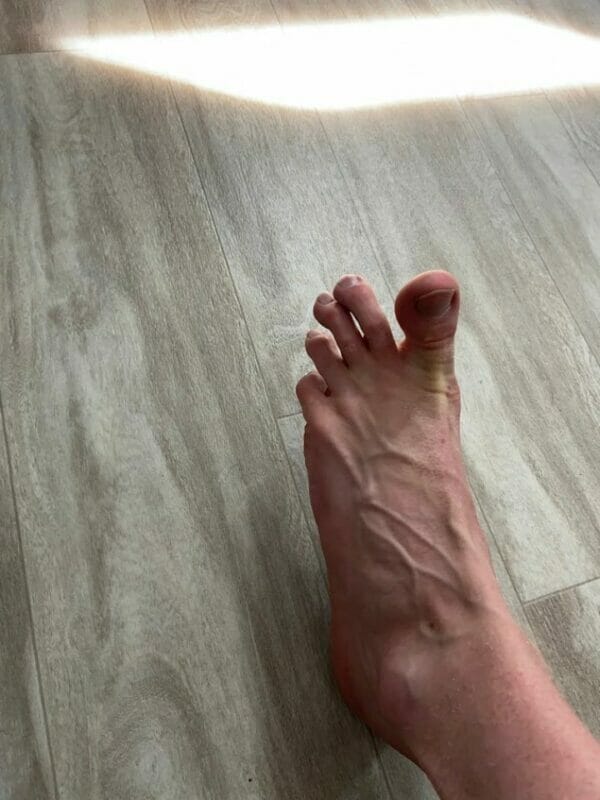
- You can sit in a chair for this one with the feet flat on the floor or stretched in front of you.
- Try to spread all of the toes apart and away from each other (make sure to be gentle with this motion).
- Hold this splayed position for 2 seconds, then relax.
- Repeat 10-15x for 2 sets.
2. Towel Scrunch
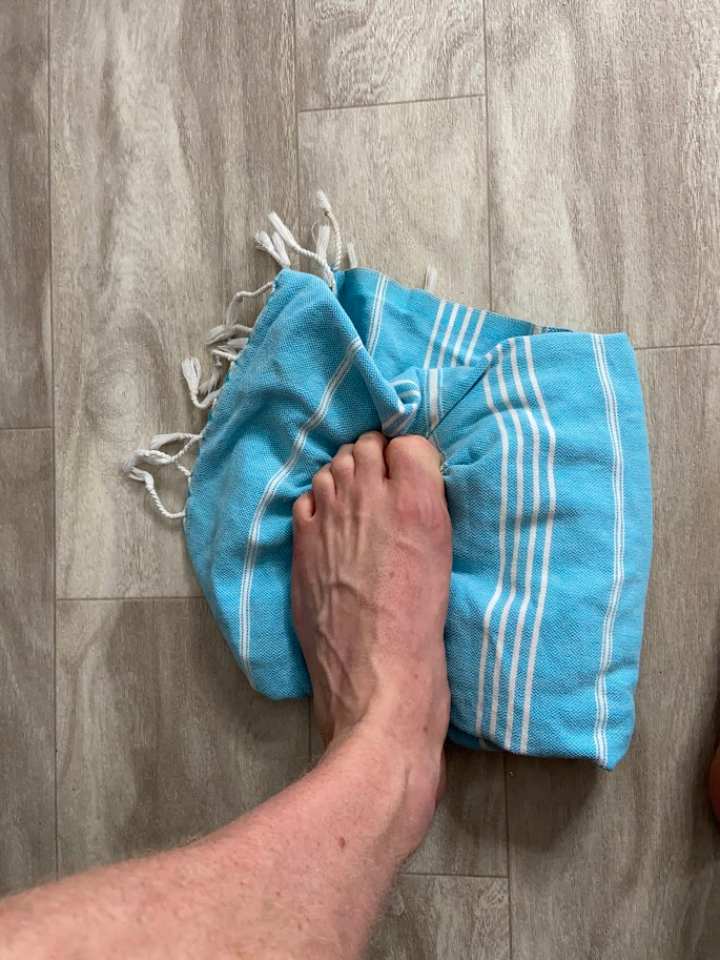
- Allow yourself to sit in a chair with the foot resting flat on top of a towel.
- Slowly curl the toes and lift the arch of the foot to scrunch the towel. Hold this scrunch for 2 seconds, then relax.
- Perform 10-15 scrunches for 2 sets.
- If you want to get really creative and work on your toe dexterity, instead of a wide towel, you could practice picking up small objects with your toes. This might include marbles, small pieces of paper or tissue, etc.
- Check out the video below for a better look at how to advance from a towel scrunch to picking up objects with the toes.
Your physical therapist may recommend for you to perform gentle range of motion with the injured toe as well.
The most important thing to remember with your range of motion is don’t push into worsening pain! Keep everything very gentle.
Here’s a demonstration showing all of the possible ways to gently stretch the toes to maintain or improve your range of motion.
Proper Footwear
While your sprained toe is healing, it’s important to make sure you’re wearing the right type of shoes.
Unless you’ve been instructed to wear a walking boot, wear shoes that have a good, rigid sole. This will help support the foot and toes the best while you’re walking.
Summing it Up
A toe sprain may seem like a small injury, but if not take care of properly, can cause some real problems.
If you suspect you’ve sprained your toe, make sure you don’t ignore it. Treat your symptoms, and if necessary, see your doctor.
Don’t let those tiny toes get the best of you!
FAQ:
Can you walk on a sprained big toe?
As long as your doctor hasn’t given you weight bearing restrictions, then yes. You may need to keep your walking to a minimum though to avoid worsening your symptoms.
What doctor should I see for a sprained toe?
You could see a podiatrist or an orthopedist who specializes in toe and foot injuries.
Can you massage a sprained toe?
You may want to wait at least a week before trying a massage on the injured toe. This is to allow initial healing to happen when the toe is in a more delicate state.
Also make sure there is no concern for a fracture, as you do NOT want to massage over a fractured toe.


